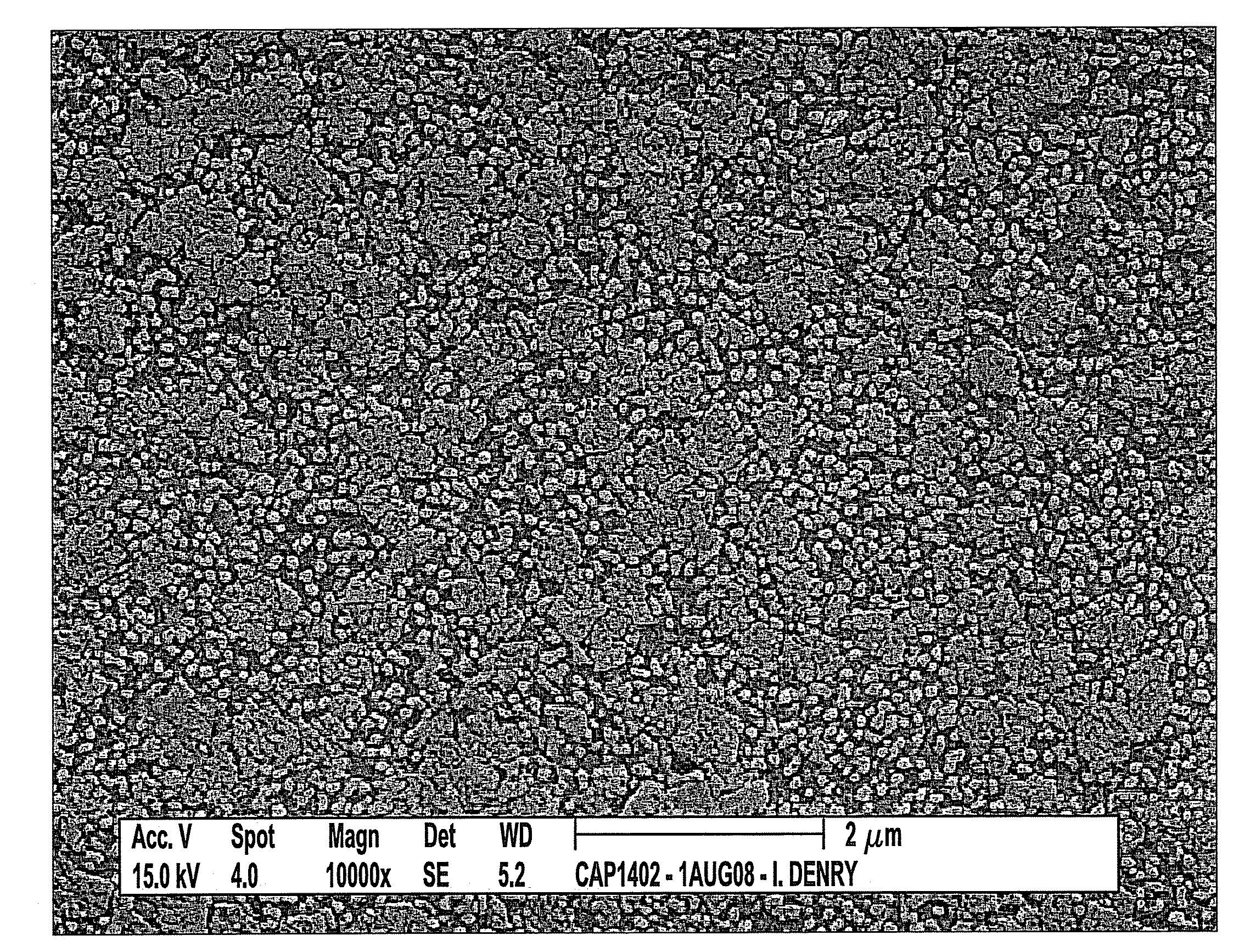Glass ceramic scaffolds with complex topography
a glass ceramic and complex technology, applied in the field of glass ceramic scaffolds with complex topography, can solve the problems of insufficient quantity or acceptable quality of autogenous bone, high cost of a second surgery, and associated morbidity, so as to increase the bioresorbability of the scaffold, improve the effect of properties and high crystallinity
- Summary
- Abstract
- Description
- Claims
- Application Information
AI Technical Summary
Benefits of technology
Problems solved by technology
Method used
Image
Examples
example 1
Preparation of Bioactive Fluorapatite (FAp) Glass-Ceramics Containing Nanocrystals
The effect of addition of niobium oxide from 0 to 5 wt. % on the microstructure of glass-ceramics derived from the Bioverit® base composition was evaluated. Fluorapatite-based glasses doped with either 1, 2.5 or 5 wt. % niobium oxide and with decreasing amounts of magnesium oxide were prepared. The niobium-free parent glass composition is given in Table 1. Reagent grade alkali carbonates were used to ensure adequate homogenization of the glasses during melting. The batch ingredients were tumbled for 4 h in a shaker-mixer, melted at 1525° C. for 3 h in platinum crucibles and quenched in water. Covered platinum crucibles are used to limit fluorine losses by volatilization. After quenching, the frits were powdered in a planetary mill and re-melted at 1525° C. for 3 h to ensure homogeneity. The molten glasses was cast into stainless-steel molds to form 12×60-mm cylindrical ingots, transferred to an oven se...
example 2
Effect of Heat Treatment Temperature on Microstructure of Fluorapatite Glass-Ceramics
The effect of heat treatment temperature on the microstructure of a fluorapatite-based (FAp) glass-ceramic was investigated in order to optimize the sintering schedule for powder compacts. A fluorapatite-based glass-ceramic composition previously shown to promote crystallization of sub-micrometer crystals was prepared by twice melting at 1475° C. for 3 h. Glass ingots were sectioned into discs (n=3 per group) and heat-treated between 950 and 1200° C. (50° C.-increments) for 1 h. The microstructure was characterized by scanning electron microscopy, quantitative stereology and image analysis. Crystalline phases were analyzed by x-ray diffraction (XRD) on powdered specimens. XRD confirmed the presence of FAp in all specimens, together with forsterite appearing at temperatures above 1000° C. The dual microstructure topography of the FAp glass ceramic is shown in FIG. 1. A dual microstructure of sub-micr...
example 3
Characterization of the Sintering Behavior
The sintering behavior of FAp glass powders can be studied using four complementary techniques: dilatometry, real-time ESEM imaging using a heating stage, density measurements and computational modeling of the sintering process. Cylindrical glass pellets (n=3 per group) can be prepared by uniaxial pressing of glass powders. The pellets are subjected to a heat treatment in a horizontal dilatometer (Model 1600D, Orton) at various heating rates (1, 2.5 or 5° C / min.). The initial expansion and sintering shrinkage is recorded as a function of temperature. The sintering behavior can also be assessed by ESEM with an in situ heating stage. Glass particles are placed in a small platinum crucible and heat treated to 975° C. on the heating stage of the microscope. This setup will allow precise determination of the temperature at which neck formation and particle coalescence starts to occur.
The density of the pellets (n=3 per group) is measured before a...
PUM
| Property | Measurement | Unit |
|---|---|---|
| Temperature | aaaaa | aaaaa |
| Temperature | aaaaa | aaaaa |
| Temperature | aaaaa | aaaaa |
Abstract
Description
Claims
Application Information
 Login to View More
Login to View More - R&D
- Intellectual Property
- Life Sciences
- Materials
- Tech Scout
- Unparalleled Data Quality
- Higher Quality Content
- 60% Fewer Hallucinations
Browse by: Latest US Patents, China's latest patents, Technical Efficacy Thesaurus, Application Domain, Technology Topic, Popular Technical Reports.
© 2025 PatSnap. All rights reserved.Legal|Privacy policy|Modern Slavery Act Transparency Statement|Sitemap|About US| Contact US: help@patsnap.com



